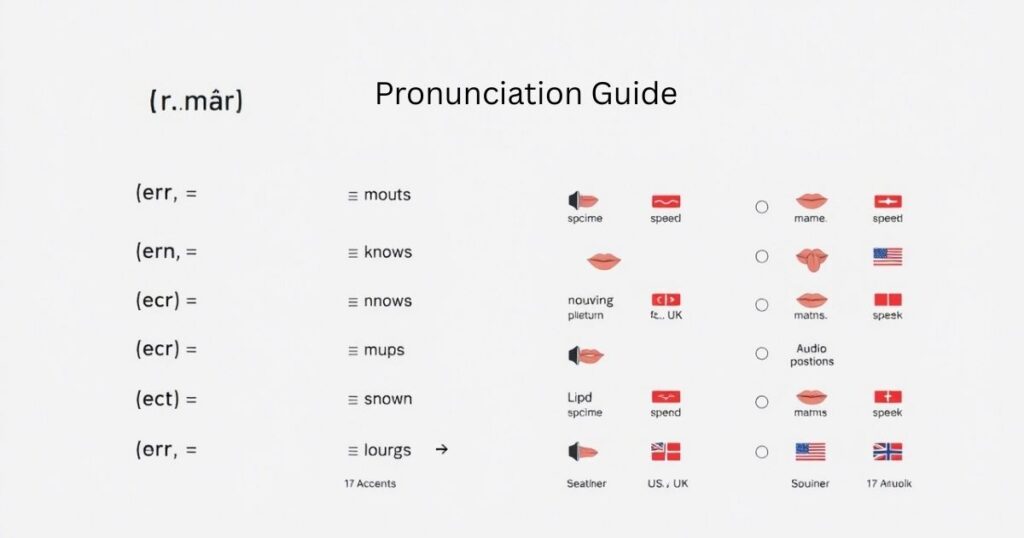Many people feel confused about the correct plural of journey. Is it a journey or journies? The difference between journey vs journey may seem small, but in writing, every letter matters. A lot of people wonder: journey vs journey,which is right? In The Ultimate Guide to Spelling ‘Journeys’, you’ll learn the right answer. The correct spelling is always journeys, ending in -eys, not -ies. While English grammar can sometimes feel tricky, this rule is simple once you understand it.
Whether you’re talking about trips, work travels, or personal experiences, using the right plural form is important. Journeys vs journies isn’t just about spelling,it’s about writing with clarity and confidence. In The Ultimate Guide to Spelling ‘Journeys’, we explain it in a way that’s easy to follow, so you won’t second-guess yourself again. Keep reading The Ultimate Guide to Spelling ‘Journeys’ to settle this common mistake once and for all.
Journeys vs journeys:

Many people feel confused about the correct plural of journey. Is it a journey or journies? The difference between journey vs journey may seem small, but in writing, every letter matters. A lot of people wonder: journies or journeys,which is right? In The Ultimate Guide to Spelling ‘Journeys’, you’ll learn the right answer. The correct spelling is always journeys, ending in -eys, not -ies. While English grammar can sometimes feel tricky, this rule is simple once you understand it.
Whether you’re talking about trips, work travels, or personal experiences, using the right plural form is important. journey vs journey isn’t just about spelling,it’s about writing with clarity and confidence. In The Ultimate Guide to Spelling ‘Journeys’, we explain it in a way that’s easy to follow, so you won’t second-guess yourself again. Keep reading The Ultimate Guide to Spelling ‘Journeys’ to settle this common mistake once and for all.
Read this Also: Trailer or Trailor: Which Spelling Is Correct and Why?
The Definitive Answer: Why It’s Always ‘Journeys’
English can be tricky, but when it comes to forming the plural of “journey,” the rule is crystal clear: it’s always “journeys.” There’s no room for debate here. The main reason comes down to the rule involving words that end in a vowel plus “y” versus those that end in a consonant plus “y.” When a word ends in a consonant + y, you usually drop the “y” and add ies. However, when the word ends in a vowel + y, you simply add an “s” to make it plural. Since “journey” ends with “ey,” which is a vowel + y pattern, the plural is formed by just adding “s,” making it “journeys.” This is the reason spelling “journeys” is incorrect. The pluralization correctness depends on recognizing this pattern.
This rule applies to many other English words ending in “ey.” Because “journey” follows this rule, you can confidently use “journeys” whenever you talk about more than one journey. Understanding this will improve your spelling and grammar. So, whenever you’re writing about multiple journeys, whether those are vacations, business trips, or metaphorical paths in life, “journeys” is the only correct form to use.
The Y-to-IES Rule in English
The confusion about “journeys” versus “journies” often stems from a very common rule in English about words ending in “y.” This rule says that when a word ends with a consonant + y, you drop the “y” and add ies to make it plural. On the other hand, when a word ends with a vowel + y, you just add s. The word “journey” ends with “ey,” which is a vowel + y ending, so the plural form is “journeys.”
Words like “monkey,” “valley,” and “key” follow the same pattern. For example, the plural of “monkey” is “monkeys,” not “monkeys,” and “key” becomes “keys,” not “kies.” These examples help show the spelling rules and exceptions clearly. Knowing these patterns can help you avoid spelling mistakes and understand why “journies” is wrong. The key is to remember the difference between consonant + y and vowel + y endings.
History and Historical Development
The word “journey” has deep roots in the English language. It comes from the Middle English word “jornee,” which itself comes from the Anglo-French word “journée,” meaning “a day’s travel or work.” This history gives us a hint about the spelling and pronunciation of the word today. Because of this etymology, the “ey” ending has stayed the same from its early use to modern English.
Knowing the history of the word helps us understand why we maintain the “ey” ending in today’s spelling. This linguistic evolution shows that “journey” is a word that has been shaped by many cultures and languages over time. By learning the word origins, you can see why the plural form sticks to the vowel + y rule and why the spelling “journeys” has no historical or grammatical support.
Grammar Deep Dive: Pluralization Rules

Understanding plural rules in English can help you prevent common mistakes when spelling words like “journey.” English has different pluralization rules based on the word ending. For example, words ending with a vowel + y simply add s to become plural, as with “journeys,” “monkeys,” and “keys.” On the other hand, words ending with a consonant + y drop the y and add ies , like “cities,” “babies,” and “stories.”
Besides these, most regular nouns just add “s” to form the plural, such as “cars,” “books,” and “phones.” English also has some irregular forms where the plural changes in different ways, but luckily “journey” follows the regular pattern. Knowing these grammar rules helps you understand the pluralization system and avoid errors, especially when words look similar but follow different rules.
Vowel + Y Words
The standard plural rule for words ending with a vowel + y is very straightforward: just add “s.” This rule applies to words like “surveys,” “trolleys,” “chimneys,” and, of course, “journeys.” These words don’t change the “y” because it follows a vowel, making the plural simple and predictable.
This spelling rule is a core part of English pluralization and rarely has exceptions. It’s helpful for learners of English to remember that if a word ends with a vowel before the “y,” the plural is made by adding an “s.” This makes writing easier and more consistent.
Consonant + Y Words
Words that end with a consonant + y follow a different pluralization rule. In these cases, you must drop the y and add ies to make the word plural. Examples include “city” becoming “cities,” “baby” becoming “babies,” and “story” turning into “stories.”
This difference is crucial for correct spelling. It separates words like “journey,” which ends with a vowel before “y,” from those that need a spelling change when pluralized. Understanding this helps writers avoid mistakes when pluralizing various words in English.
Common Mistakes and Misconceptions
In today’s digital age, modern technology influences how people write and spell words like “journeys.” You might often see “journeys” popping up online. While autocorrect tools and search engines usually catch this error and suggest “journeys,” incorrect spellings can still spread quickly through social media and casual communication.
The Oxford English Dictionary’s editor has pointed out how important it is to verify proper forms because language changes rapidly in digital communication. Misunderstandings and misspellings like this are common, but by knowing the right spelling and grammar, you can stand out with clear and correct writing.
International English Variations
English rules can vary by region, but the plural of “journey” stays consistent across different versions of English. Whether you’re writing in American English, British English, Australian English, or Canadian English, “journeys” is the standard plural form. This shows how spelling rules for this word are standardized internationally, even though other language dialects may differ.
This consistency reassures writers that no matter where they are or who they’re writing for, the plural “journeys” is always the correct spelling.
Using ‘Journeys’ in Context

In professional writing, using the correct plural form “journeys” enhances your credibility. For example, companies often talk about “memorable customer journeys” to describe client experiences. Software developers might say their tools “track user journeys across multiple platforms,” and business reports refer to “business expeditions and journeys” shaping corporate culture. Proper spelling here is vital for clear, professional communication.
In creative applications, “journeys” often appears in both literal and metaphorical ways. Writers describe “life journeys,” “spiritual voyages,” or “adventure narratives” where journeys symbolize growth and change. Whether in travel writing or storytelling, getting the plural right keeps your message strong and understandable.
Professional Writing
In business communications, using “journeys” correctly shows attention to detail and professionalism. Reports, presentations, and emails that mention “customer journeys” or “user journeys” rely on this plural form to describe multiple processes or experiences accurately. Spelling mistakes can harm credibility, so mastering this rule is important for anyone working in a professional environment.
Creative Applications
Creative writing benefits from using “journeys” in ways that paint vivid pictures. Whether you’re writing about literal travels or metaphorical life paths, “journeys” helps convey movement, change, and growth. Poets, authors, and speakers all rely on this word to connect deeply with their audience, making correct plural spelling essential.
Quick Reference Guide
To remember the pluralization rule for “journey,” keep a few key tips in mind. If you see a vowel before y, simply add “s.” Look for the “e” before the “y” in “journey” to remind yourself not to drop the “y.” Never spell it as “journies.” These simple tricks help keep your spelling on track and improve your English grammar.
This quick guide can serve as a handy cheat sheet for language learners or anyone wanting to master plural forms in English.
Memory Tricks
A useful mnemonic to remember the plural form is: “If there’s a vowel before y, adding s is no lie.” This little phrase sticks in your mind and helps you recall that words like “journey” just add “s” when pluralized. Using memory tricks like this makes learning English spelling rules easier and more fun.
Practice by spotting other vowel + y words and pluralizing them correctly. The more you practice, the better you get at avoiding mistakes like “journeys.”
Pronunciation Guide

The plural form “journeys” follows the same general pronunciation pattern as the singular. “Journey” is pronounced /ˈdʒɜːrni/, while “journeys” sounds like /ˈdʒɜːrniz/. The “s” at the end is voiced clearly, making the plural obvious in spoken language. Knowing this helps with clear communication and speaking confidently.
If English is not your first language, practicing the phonetics of “journey” and “journeys” will make your speech more natural and understandable.
This guide covers everything you need to know about spelling “journeys” correctly. Remember that the correct plural is always “journeys,” thanks to the vowel + y rule. Never misspell it as “journies.” These rules apply to similar words like “valleys” and “monkeys” too. Whether you’re writing travel stories, business documents, or personal narratives, using the proper plural form enriches your writing and maintains professional standards. Keep these rules in mind as you share your own adventures and expeditions through life with clarity and confidence.
FAQs
Is the plural of journey, journeys, or journies?
journey vs journey explains the plural of journey is always journeys, never journeys. Journeys follow the vowel + y spelling rule.
What is the plural form of the word journey?
According to journey vs journey the plural form is journeys. It adds s because the journey ends with a vowel before y.
What is the correct spelling of journeys?
journey vs journey confirms journeys is the correct spelling. Journeys is incorrect and does not follow English pluralization rules.
How do you spell plural form?
journey vs journey shows that for journeys, just add s to make journeys. Remember vowel + y words add only s.
What is the meaning of journeys?
The Ultimate Guide to Spelling Journeys clarifies journies is a misspelling. The correct plural is journeys, meaning multiple trips or travels.
Conclusion
The Ultimate Guide to Spelling ‘Journeys’ helps you understand the right way to write the word. Many people get confused about journey vs journey, but only “journey” is correct. When making it plural, it’s never journies or journeys,the right form is journeys. This is because the word ends in a vowel plus “y”, so we just add “s”.
Remember, journey vs journey is a common spelling mistake. journey vs journey journeys when talking about trips, experiences, or travels. Never use journeys, as it breaks basic grammar rules. The Ultimate Guide to Spelling ‘Journeys’ gives you the simple rule: if the word ends in “ey”, just add “s”. Keep this in mind for better spelling every time.

Gramcoachpro is your go-to platform for mastering grammar, writing, and communication skills. If you’re a student, teacher, or content creator, we provide easy-to-understand tips, examples, and tools to improve your language — fast and effectively. Our mission is to make better writing simple and accessible for everyone.

![Journeys vs Journies: Which Spelling is Correct? [Simple Guide]](https://gramcoachpro.com/wp-content/uploads/2025/05/It-Is-About-Spiritual-Protection-2025-05-21T085759.261.jpg)